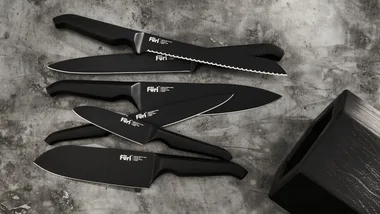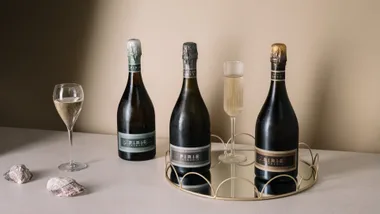Two glass artists find beauty in the strangely seductive off-centre, one vessel at a time.
Daniel Spitzer and Jill Reynolds are glass artists living in Beacon, New York. Spitzer is an established glassblower and Reynolds, a flameworker, produces glasswork on a much smaller scale. Together, the duo produce Malfatti Glass: a collection of delicate-looking yet surprisingly sturdy tableware made using only hand tools and their breath. From whimsical sake sets to test tube-like prosecco glasses, there’s an off-kilter magic to Malfatti (which means “misshapen” in Italian). Each piece is made from borosilicate, a type of glass more commonly reserved for laboratory ware.
How does a Malfatti Glass piece come to be?
Unlike furnace glass, which starts from a vat of molten material, we start with glass tubes of different sizes purchased from scientific glass suppliers. These are heated, stretched and broken down into sections, heated again until malleable, then inflated into the size and shape of the glass. The bottom is then flattened and the lip opened up. Voilà.
You use borosilicate to produce your pieces. Why this particular material?
We rely less on tools using it and have found the process more intimate – we’re able to get so close to the material. A lot of flameworkers use soda-lime glass [which is used in most bottles and windows] because it’s available in many more colours. We were more interested in the conceptual possibilities of borosilicate and its transparency.
Malfatti Glass prosecco glasses (top left), $150 a pair; Malfatti Glass sake pitcher (top right) and cups, $230 for a set with four cups, are available at sorrythanksiloveyou.com in Sydney or direct from malfattiglass.com
 James Evans
James Evans




-(10).png?resize=380%2C285)



